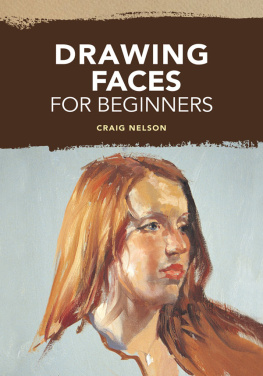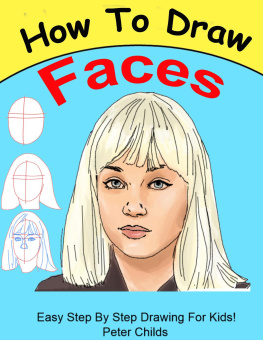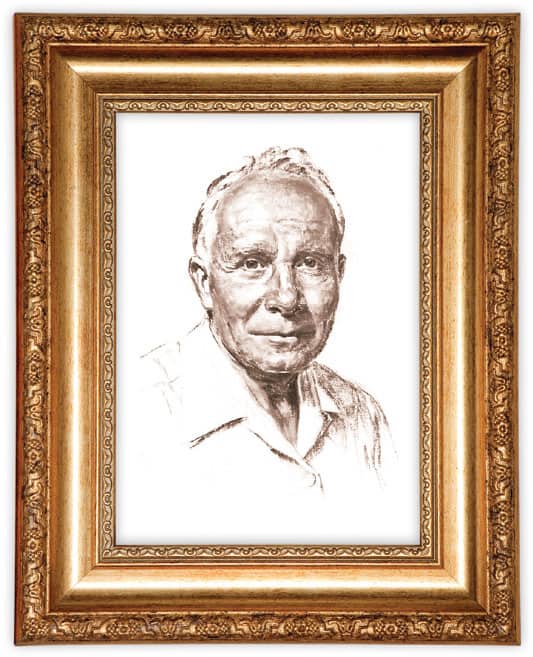How to Draw & Paint
The titles in this classic series contain progressive visual demonstrations, expert advice, and simple written explanations that assist novice artists through the next stages of learning. In this series, professional artists walk the reader through the artistic process step by step, from preparation and preliminary sketches to special techniques and final details. Organized into categories of instruction, these books provide an introduction to an array of media and subjects.
Drawing
Oil
Watercolor
Acrylic
Pastel
Cartooning
Special Subjects
Artists Library
These titles offer both beginning and advanced artists the opportunity to expand their creativity, conquer technical obstacles, and explore new media. Written and illustrated by professional artists, the books in this series are ideal for anyone aspiring to reach a new level of expertise. They serve as useful tools that artists of all skill levels can refer to again and again.
Drawing Made Easy, Acrylic Made Easy & Watercolor Made Easy
Every artist should have the opportunity to experience the joy of learning without having to deal with intimidating, complicated lessons. The books in these series simplify even the most complex concepts, making it easy for the beginner to gain an in-depth understanding of pencil, acrylic, or watercolor. These enjoyable, informative guides will teach artists everything they need to know about the tools and materials and basic strokes and techniques necessary for each medium. Readers will then discover a wealth of step-by-step projects, allowing them to put their newfound skills to work.
About the Artist
WALTER T. FOSTER was born in Woodland Park, Colorado, in 1891. In his younger years, he worked as a sign painter and a hog medicine salesman. He also performed in a singing and drawing vaudeville act. Walter invented the first postage-stamp vending machine and drew political caricatures for several large newspapers. Hes well known as an accomplished artist, art instructor, and art collector. In the 1920s, while running his own advertising agency and instructing young artists, Walter began writing self-help art instruction books. The books were first produced in his home in Laguna Beach, California, where he wrote, illustrated, and printed them himself. In the 1960s, as the product line grew, he moved the operation to a commercial facility, which allowed him to expand the company and achieve worldwide distribution. Walter Foster was a truly dominant force in the development of art instruction books that make it possible for many people to improve their art skills easily and economically. Walter passed away in 1981, but he is fondly remembered for his warmth, dedication, and unique instruction books.
Almost a century ago, Walter Fostera well-known artist, instructor, and collectorbegan producing self-help art instruction books from his home in Laguna Beach, California. He originally wrote, illustrated, printed, bound, packaged, shipped, and distributed them himself. Although Walter passed away in 1981 at the age of 90, his legacy continues in a growing product line. Walter Foster Publishing now provides how-to books and kits to millions of enthusiastic artists worldwide who enjoy the rewards of learning to draw and paint. People who have never before picked up a paintbrush or drawing pencil have discovered their artistic talents through his easy-to-follow instruction books.
With nearly 100 years of excellence, we are dedicated to preserving the high standards and superb quality you expect from our products. We believe artists are eager to learn, sharpen their skills, and experience new artistic horizons. Our mission is to provide the tools to accomplish those goalswe offer step-by-step books and kits that are accessible, entertaining, affordable, and informative. Whether this book is your first experience with us or the continuation of a long-term relationship with our products, we are sure that this title in our How to Draw & Paint series will delight you. Whatever your artistic ambitions may be, we wish you good luck and success, and we hope that you always have fun in the process.
TOOLS & MATERIALS
Graphite pencil artwork requires few supplies, and fortunately they are fairly inexpensive. Choose professional pencils and paper, rather than student-grade materials; they will last longer and ensure a higher-quality presentation.
PENCILS
Pencils are labeled based on their lead texture. Hard leads (H) are light in value and great for fine, detailed work, but they are more difficult to erase. Soft leads (B) are darker and wonderful for blending and shading, but they smudge easily. Medium leads, such as HB and F, are somewhere in the middle. Select a range of pencils between HB and 6B for variety. You can purchase wood-encased pencils or mechanical pencils with lead refills.
Wooden Pencil The most common type of pencil is wood-encased graphite. These thin rodsmost often round or hexagonal when cut crosswiseare inexpensive, easy to control and sharpen, and readily available to artists.
Flat Carpenters Pencil Some artists prefer using a flat carpenters pencil, which has a rectangular body and lead. The thick lead allows you to easily customize its shape to create both thick and thin lines.
Carpenters Pencil
Mechanical Pencil Mechanical pencils are plastic or metal barrels that hold individual leads. Some artists prefer the consistent feel of mechanical pencils to that of wooden pencils; the weight and length do not change over time, unlike wooden pencils that wear down with use.
Mechanical Pencil
Woodless Graphite Pencil These tools are shaped like wooden pencils but are made up entirely of graphite lead. The large cone of graphite allows artists to use either the broad side for shading large areas or the tip for finer strokes and details.
Woodless Pencil
Graphite Stick Available in a full range of hardnesses, these long, rectangular bars of graphite are great tools for sketching (using the end) and blocking in large areas of tone (using the broad side).













